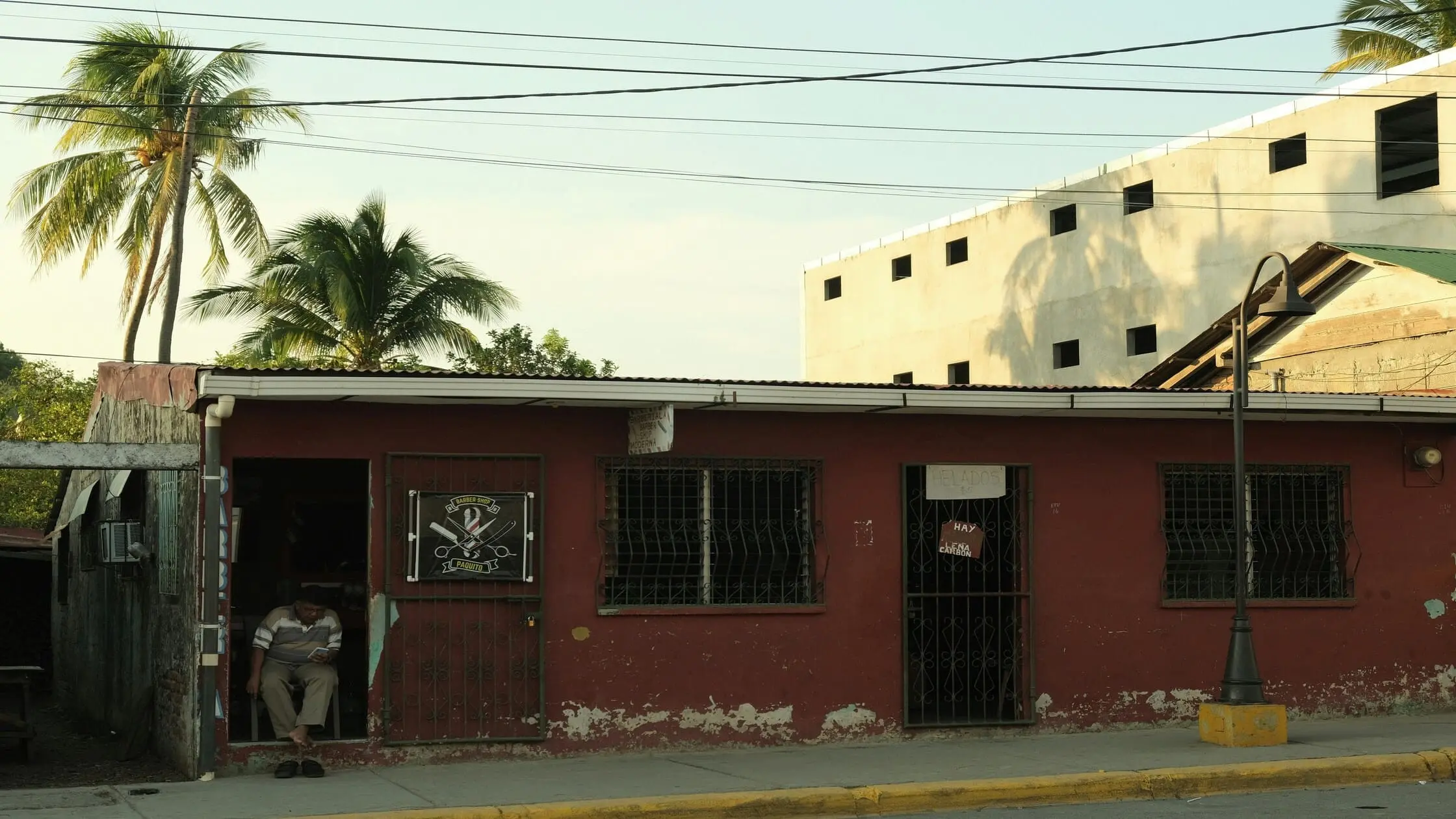Understanding New Mexico squatter rights is essential for both property owners and potential occupants. Whether you are a landlord looking to protect your investment or someone curious about adverse possession, this guide explains everything you need to know in 2025.
We’ll explore the legal framework, outline common misconceptions, and provide practical strategies to address unauthorized occupancy in New Mexico.

Before we dive in, please review the quick facts table below that covers key rental criteria and legal benchmarks relevant to this subject.
What Are New Mexico Squatter Rights?
New Mexico squatter rights refer to the legal doctrines that may eventually allow an unauthorized occupant to claim ownership of the property through adverse possession. In New Mexico, squatters must meet strict criteria over an extended period before any legal claim is recognized.
These rights are often misunderstood, and many ask: what are squatters' rights in New Mexico?
Squatting Vs. Trespassing: What Does The Law Actually Say?
The distinction between squatting and trespassing is vital for understanding New Mexico squatter rights. While trespassing involves unauthorized entry, squatting implies a prolonged and public occupation of property that, under certain conditions, can lead to an adverse possession claim.
- Squatting: When an individual occupies a property openly and continuously without the owner’s permission, eventually meeting all statutory requirements.
- Trespassing: Involves brief or intermittent unauthorized entry that does not lead to any claim of ownership.
New Mexico squatter rights law differentiates these acts clearly. For instance, if someone stays for only a few days—even if they are there without permission—it is treated as trespassing rather than squatting.
Conversely, suppose the occupation extends well beyond the minimum statutory period (often referenced as squatters' rights 30 days in New Mexico as an initial notice period). In that case, the situation becomes far more complex.
The Legal Framework: New Mexico Statutes §§ 37-1-22 And 37-1-23
Central to New Mexico squatter rights are New Mexico Statutes §§ 37-1-22 and 37-1-23. These statutes outline the requirements for adverse possession and provide a legal pathway for squatters to claim title if potentially:
- The possession is open, notorious, and hostile,
- The squatter possesses the property continuously for the statutory period, and
- The squatter meets all additional statutory conditions.
Understanding these statutes helps clarify why some squatters can eventually gain rights while others fail to do so.

Can Someone Legally Take A House Just By Living In It? A Misconception
A common misconception about New Mexico squatter rights is that someone can simply move into a vacant house and claim ownership after a short period. In reality, while adverse possession is a recognized legal doctrine, it requires the squatter to meet rigorous conditions over many years—far longer than the frequently cited “30‑day rule.”
Questions such as how long until squatters' rights become effective highlight that the process is lengthy and challenging, ensuring that property owners are not deprived of their rights without due process.
How Adverse Possession Works in New Mexico
Adverse possession is the legal process by which New Mexico squatter rights may eventually convert unauthorized occupancy into legal ownership. It is one of the most contentious issues in property law.
What is adverse possession?
Adverse possession in New Mexico allows a squatter to claim title to the property if they have occupied it openly, continuously, and without the owner’s permission for a specific period as defined by state law.
In New Mexico, the required period can vary—often between 10 to 15 years—depending on the circumstances and evidence provided.
For instance, some may refer to adverse possession in New Mexico when discussing the legal pathway for acquiring property rights.
5 Legal Requirements For A Squatter To Claim Property
For a squatter to successfully claim property through adverse possession, several legal requirements must be met:
- Step 1 - Open and Notorious Possession: The squatter’s occupation must be visible and obvious to any onlooker.
- Step 2 - Continuous and Uninterrupted Use: The property must be occupied continuously for the statutory period.
- Step 3 - Hostile Claim: The occupation must occur without the owner’s permission.
- Step 4 - Exclusive Possession: The squatter must be the only one exercising control over the property.
- Step 5 - Actual Possession: The squatter must physically use and maintain the property, sometimes even paying property taxes.
These strict criteria mean that many adverse possession claims fail, and the law is structured to protect the interests of property owners.
Why Do Most Squatter Claims Fail (And How Can Owners Fight Back)?
In New Mexico, most squatter claims falter because they fail to meet one or more of the legal requirements for adverse possession. Common reasons include:
- Interruption of Possession: Gaps in continuous occupancy can derail a claim.
- Lack of Notice: If the squatter does not use the property openly, the claim may be dismissed.
- Owner Intervention: Prompt legal action by property owners can prevent squatters from meeting the statutory period.
For property owners, understanding these pitfalls is crucial. Knowing that adverse possession is a difficult claim to establish can empower owners to take swift legal action—such as knowing how to evict a squatter in New Mexico—before the squatter’s occupancy reaches a critical point.
Squatting vs. Trespassing vs. Holdover Tenants: Key Differences
Not all unauthorized occupancies are the same. It is important to differentiate between:
- Squatters: Occupants who intend to claim ownership through adverse possession.
- Trespassers: Individuals who enter or remain on property without permission but with no intent to claim ownership.
- Holdover Tenants: Former tenants who remain in the property after their lease expires, often with some legal protections as tenants.
These distinctions are critical in New Mexico, where trespassing laws in New Mexico and property rights differ markedly between each category.
For example, criminal trespass in New Mexico can carry immediate legal consequences, whereas a holdover tenant might be subject to eviction procedures that follow the proper legal framework.

How to Remove a Squatter in New Mexico: A Property Owner’s Guide
When facing an unauthorized occupant, property owners need to know exactly how to evict a squatter in New Mexico. The process is complex, requiring strict adherence to state law to avoid potential legal pitfalls.
- Verify the Occupancy: Determine whether the individual is a squatter or falls under another category, such as a holdover tenant.
- Serve a Notice to Quit: Provide the occupant with a formal notice to vacate the premises. This notice should comply with state guidelines, including any reference to squatters rights 30 days New Mexico as a preliminary timeframe.
- File for Eviction: If the squatter does not leave voluntarily, initiate the formal eviction process through the local court system.
- Attend Court Proceedings: Present all evidence regarding the unauthorized occupancy, demonstrating that the occupant fails to meet any legal standards for adverse possession.
- Enforce the Eviction: Work with local law enforcement to remove the squatter once a court order is obtained.
Throughout this process, property owners must ensure that every step is documented and compliant with New Mexico squatter rights law to safeguard against potential legal challenges.
Is It Illegal to Move Into an Abandoned House in New Mexico?
A question that often arises in discussions about New Mexico squatter rights is whether moving into an abandoned house is illegal. The answer is not straightforward and depends on several factors.
What Qualifies As “Abandoned” Under New Mexico Law?
For a property to be considered abandoned in New Mexico, several conditions must be met:
- The owner has visibly relinquished control over the property.
- There is no evidence of regular maintenance or occupancy.
- Notices or other communications indicate the owner’s disinterest in the property.
These criteria are important because only truly abandoned properties may create a situation where a squatter might later claim rights under adverse possession.
Legal Consequences Of Occupying Unclaimed Properties
Occupying an abandoned property without taking the proper legal steps can lead to serious consequences. Although some may mistakenly believe that simply living in a vacant property automatically confers rights, the legal process in New Mexico demands rigorous proof of continuous, hostile, and exclusive possession over many years.
Failing to adhere to these conditions means that any attempt to claim New Mexico squatter rights may be invalidated, and the occupant could be subject to eviction and even criminal trespass charges.
Recent Legislative Changes in New Mexico Squatter Laws (2025 Update)
In 2025, New Mexico has seen several important legislative changes that affect New Mexico's squatter rights. These updates include:
- Revised Notice Periods: Adjustments to the minimum period required for a squatter to begin establishing rights.
- Enhanced Legal Protections for Property Owners: New measures ensure that property owners have clearer avenues for eviction before adverse possession can be claimed.
- Stricter Definitions of Adverse Possession: Updated statutory language in New Mexico Statutes §§ 37-1-22 and 37-1-23 to reduce ambiguity.
- Clarifications on Trespassing Laws: Recent reforms have strengthened penalties for criminal trespass in New Mexico, ensuring that unauthorized occupants are dealt with swiftly.
These legislative changes aim to balance the rights of squatters and property owners, ensuring that while New Mexico squatter rights remain recognized, they are not abused by individuals seeking to claim ownership without fulfilling the legal criteria.
6 Foolproof Strategies To Keep Squatters Off Your Property

Property owners looking to protect their investments should adopt proactive measures. Here are some effective strategies to deter unauthorized occupancy:
- Regular Inspections: Frequent property visits help deter squatters from establishing a long-term presence.
- Enhanced Security Systems: Install cameras, alarms, and proper lighting to discourage potential squatters.
- Clear “No Trespassing” Signage: Post visible signs in accordance with New Mexico’s trespassing laws.
- Timely Maintenance: Ensure your property is well-maintained, as a neglected property is more likely to attract squatters.
- Strong Lease Agreements: Use comprehensive rental contracts that clearly define tenant responsibilities and outline the consequences of unauthorized occupancy.
- Prompt Legal Action: At the first sign of unauthorized occupancy, serve a notice to quit and consult legal counsel to prevent any adverse possession claims.
By employing these strategies, property owners can significantly reduce the risk of unauthorized occupancy and protect their rights under New Mexico squatter rights.
Summary
Ultimately, understanding New Mexico squatter rights is vital for both property owners and legal professionals. With clear legal standards and recent 2025 updates, you are better equipped to manage and prevent squatting disputes.
We hope our comprehensive overview empowers stakeholders to navigate complex property laws confidently protecting their investments and secure assets. In case you want to have more information regarding renting or other rental lease-related documents, don’t hesitate and visit our LeaseRunner blog.
FAQs
Q1. What are squatters’ rights in New Mexico?
They refer to the legal protections that unauthorized occupants may eventually obtain through adverse possession if all statutory requirements are met.
Q2. How do I evict a squatter in New Mexico?
Follow the proper legal procedures: serve a notice to quit, file for eviction in court, and comply with state tenancy termination laws.
Q3. Is criminal trespass in New Mexico common?
Yes, property owners can file charges for criminal trespass if someone enters without permission, though force is not permitted unless there is an imminent threat.
Q4. What are trespassing laws in New Mexico?
New Mexico squatter rights law differentiates between squatting and criminal trespass, with stricter penalties for unauthorized entry without the intent to claim ownership.



